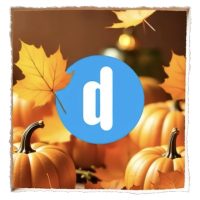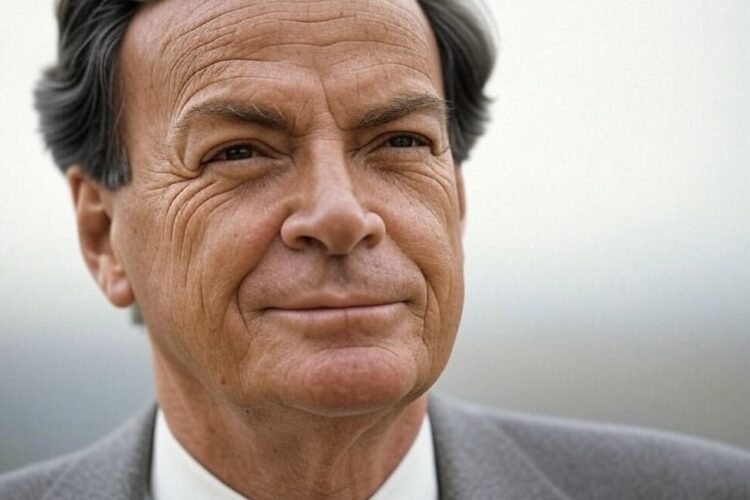Richard Feynman, a Nobel Prize-winning theoretical physicist, transformed quantum mechanics with his work on quantum electrodynamics (QED) and Feynman diagrams, intuitive tools for visualizing particle interactions. Born in 1918, his curiosity drove contributions to the Manhattan Project, where he helped develop the atomic bomb, and later investigations, like the Challenger disaster, where he exposed O-ring failures. At Caltech, Feynman’s Feynman Lectures on Physics revolutionized science education. His path integral formulation reshaped quantum theory, while his ideas on nanotechnology and quantum computing proved visionary. Known for bongo drumming, safecracking, and books like Surely You’re Joking, Mr. Feynman!, he blended rigor with charisma. Feynman’s legacy in physics, teaching, and science communication endures, inspiring curiosity and clarity.
Long Version
Richard Feynman (1918–1988) was a towering figure in 20th-century science, renowned as a theoretical physicist, Nobel Prize laureate, and charismatic educator whose contributions to quantum mechanics, quantum electrodynamics (QED), and science communication continue to resonate. His insatiable curiosity, innovative problem-solving, and ability to distill complex ideas into accessible insights made him a legend in physics and a cultural icon. From his pivotal role in the Manhattan Project to his groundbreaking Feynman diagrams and his unforgettable storytelling in books like Surely You’re Joking, Mr. Feynman!, Feynman’s life and work embody the pleasure of finding things out. This article explores every facet of Feynman’s legacy, weaving together his scientific achievements, personal anecdotes, and enduring influence.
Early Life and the Spark of Curiosity
Born on May 11, 1918, in Queens, New York, Richard Phillips Feynman displayed an early aptitude for science and problem-solving. Raised in a family that encouraged intellectual exploration, he was fixing radios as a teenager, a hobby that honed his analytical skills. His curiosity was insatiable, driven by a desire to understand the world’s underlying principles. Feynman’s education at MIT and later Princeton University set the stage for his contributions to theoretical physics. At Princeton, under the mentorship of John Wheeler, he began exploring quantum mechanics, laying the groundwork for his revolutionary path integral formulation.
Feynman’s approach to learning was unconventional. He preferred deriving solutions from first principles rather than memorizing formulas, a habit that defined his later work. This mindset, coupled with his playful yet rigorous style, made him a standout even among peers. His early papers on the Hellmann-Feynman theorem, which relates molecular forces to electron density, hinted at his ability to tackle complex problems with clarity.
The Manhattan Project and Los Alamos
During World War II, Feynman joined the Manhattan Project at Los Alamos, New Mexico, contributing to the development of the atomic bomb. At just 24, he was among the youngest physicists working on the Trinity test. His role involved calculating neutron diffusion and criticality, critical to the bomb’s design. Feynman collaborated with Hans Bethe on the Bethe-Feynman formula, which estimated the explosive yield of fission devices. His time at Los Alamos also showcased his safecracking antics, as he famously opened secure filing cabinets to highlight vulnerabilities—an anecdote immortalized in Surely You’re Joking, Mr. Feynman!.
Los Alamos was a crucible for Feynman’s growth. Working alongside giants like Enrico Fermi and J. Robert Oppenheimer, he honed his ability to simplify complex problems. Yet, the moral implications of the atomic bomb weighed on him, shaping his later reflections on science’s societal impact. His experiences at Los Alamos underscored his knack for blending serious science with a playful, irreverent spirit.
Quantum Electrodynamics and the Nobel Prize
Feynman’s most celebrated contribution came in the field of quantum electrodynamics (QED), the study of how light and matter interact at the quantum level. In the 1940s, QED was plagued by infinities—calculations that yielded nonsensical results. Feynman, alongside Julian Schwinger and Sin-Itiro Tomonaga, developed methods to eliminate these infinities through renormalization, a mathematical technique that made QED predictions precise. His approach, however, was uniquely visual and intuitive, embodied in Feynman diagrams.
Feynman diagrams are simple yet powerful sketches that represent particle interactions, such as electrons emitting or absorbing photons. These diagrams revolutionized physics by making complex calculations accessible and intuitive. They remain a cornerstone of quantum field theory, used in everything from particle accelerators to cosmology. In 1965, Feynman shared the Nobel Prize in Physics with Schwinger and Tomonaga for their work on QED, cementing his status as a giant in theoretical physics.
Feynman’s path integral formulation, another cornerstone of his legacy, reimagined quantum mechanics. Instead of tracking a single particle trajectory, he proposed that particles take all possible paths, with each path contributing to the final outcome based on its probability. This sum-over-histories approach not only deepened our understanding of quantum mechanics but also influenced fields like quantum computing and statistical mechanics.
The Feynman Lectures and Science Education
Beyond research, Feynman was a transformative educator. At the California Institute of Technology (Caltech), where he taught from 1950 until his death, he redefined how physics was taught. His most enduring contribution to education is The Feynman Lectures on Physics, a three-volume series based on his undergraduate courses at Caltech in the early 1960s. Covering topics from classical mechanics to quantum field theory, the lectures are celebrated for their clarity, enthusiasm, and insight. They remain a vital resource for students and professionals alike.
Feynman’s teaching philosophy emphasized understanding over rote memorization. His ability to explain concepts like superfluidity or the Brownian ratchet—a thought experiment about extracting work from random motion—made abstract ideas tangible. His lectures, infused with humor and real-world analogies, showcased his gift for science communication. Phrases like “the pleasure of finding things out” became synonymous with his approach, inspiring generations to embrace scientific discovery.
The Challenger Disaster and Public Service
In 1986, Feynman’s analytical prowess and commitment to truth took center stage during the investigation of the Space Shuttle Challenger disaster. As a member of the Rogers Commission, he cut through bureaucratic obfuscation to identify the cause: a failure of the O-ring seals in the shuttle’s solid rocket boosters, exacerbated by cold weather. His televised demonstration—dipping an O-ring in ice water to show its loss of elasticity—was a masterclass in clear communication. This moment not only exposed flaws in NASA’s decision-making but also highlighted Feynman’s ability to make complex issues accessible to the public.
Feynman’s work on the commission reflected his broader ethos: science must serve truth, not authority. His insistence on transparency and rigor left a lasting impact on engineering and public policy, reinforcing his role as a scientist-citizen.
Niche Contributions and Far-Reaching Ideas
Feynman’s curiosity extended to niche areas of physics and beyond. His work on the weak interaction, a fundamental force governing processes like beta decay, contributed to the Standard Model of particle physics. He also explored the parton model, which describes the internal structure of protons and neutrons, influencing high-energy physics experiments. His studies of superfluidity, where liquids flow without viscosity at near-absolute zero, deepened our understanding of quantum fluids.
In the 1950s, Feynman foresaw nanotechnology in his talk “There’s Plenty of Room at the Bottom,” envisioning machines manipulating matter at the atomic scale. This prophetic lecture inspired decades of research in nanoscience. Similarly, his early ideas on quantum computing—exploring how quantum systems could perform calculations beyond classical computers—laid groundwork for a field now revolutionizing technology.
Feynman’s interdisciplinary interests also led him to Tuvan throat singing, a musical tradition he explored during a quest to visit the remote region of Tuva. This pursuit, detailed in Tuva or Bust!, exemplified his boundless curiosity and willingness to embrace the unconventional.
Personal Life and Cultural Impact
Feynman’s charisma and eclectic interests made him a cultural figure. His bongo drumming, performed at Caltech events and even in a Brazilian samba band, reflected his playful side. His storytelling, captured in bestsellers like Surely You’re Joking, Mr. Feynman! and The Pleasure of Finding Things Out, revealed a scientist who saw life as an adventure. These books, blending humor with profound insights, brought physics to a broad audience, making Feynman a popular science icon.
His personal life, however, was not without challenges. The loss of his first wife, Arline, to tuberculosis during the Manhattan Project was a profound tragedy that shaped his emotional depth. Later marriages and his role as a father added layers to his complex persona. Feynman’s ability to balance intense scientific focus with a zest for life—whether sketching, joking, or debating—made him relatable and inspiring.
Legacy and Enduring Influence
Feynman’s death in 1988 from cancer marked the loss of a singular mind, but his legacy endures. His scientific contributions, from Feynman diagrams to the path integral formulation, remain foundational to physics. His educational materials, particularly The Feynman Lectures, continue to shape how physics is taught. His books and recorded talks, available through platforms like grok.com and the X iOS app, keep his voice alive for new generations.
Feynman’s approach to science—driven by curiosity, skepticism, and clarity—offers timeless lessons. His work on quantum field theory, nanotechnology, and quantum computing continues to influence cutting-edge research. His role in the Challenger investigation underscores the importance of scientific integrity in public life. Even his quirks, like safecracking and bongo drumming, remind us that creativity and rigor can coexist.
In a world increasingly reliant on science, Feynman’s example as a communicator and educator is more relevant than ever. His mantra, “I’d rather have questions that can’t be answered than answers that can’t be questioned,” encapsulates his philosophy. Whether through his Nobel Prize-winning work on QED or his playful exploration of Tuvan throat singing, Richard Feynman remains a beacon of what it means to live a life of discovery.
Hashtags For Social Media
#richardfeynman #quantumphysics #feynmandiagrams #nobelprize #physicsgenius #sciencehistory #manhattanproject #challengerinvestigation #feynmanlectures #quantummechanics #nanotechnology #quantumcomputing #pathintegral #scienceeducation #physicslovers #theoreticalphysics #sciencestories #feynmanfans #popularscience #physicsinspiration #sciencememes #learnphysics #physicscommunity #scienceicons #feynmanlegacy #spaceexploration #sciencecommunication #physicsnerd #stemeducation #viralscience
Related Questions, Words, Phrases
richard feynman biography | who was richard feynman | what did richard feynman discover | richard feynman quantum mechanics contributions | feynman diagrams explained | why did richard feynman win the nobel prize | richard feynman manhattan project role | what are the feynman lectures on physics | richard feynman challenger disaster investigation | how did richard feynman impact nanotechnology | richard feynman quantum computing ideas | what is the path integral formulation by feynman | richard feynman books list | surely you’re joking mr feynman summary | the pleasure of finding things out book review | richard feynman teaching methods | what did feynman say about science education | richard feynman bongo drums story | feynman safecracking los alamos | richard feynman personal life details | how did richard feynman die | feynman quantum electrodynamics theory | what is the bethe-feynman formula | richard feynman superfluidity research | feynman weak interaction studies | richard feynman parton model | what did feynman do at caltech | richard feynman tuvan throat singing | feynman o-ring demonstration challenger | how did feynman influence modern physics | richard feynman quotes on curiosity | what was feynman’s role in the rogers commission | richard feynman scientific legacy | feynman lectures on physics free online | how did feynman change science communication








